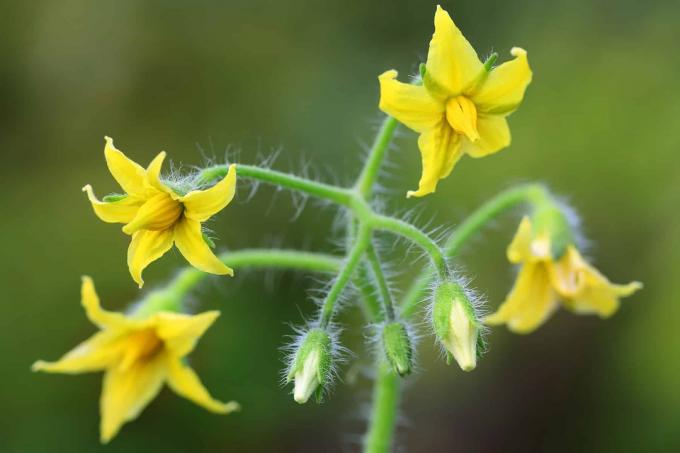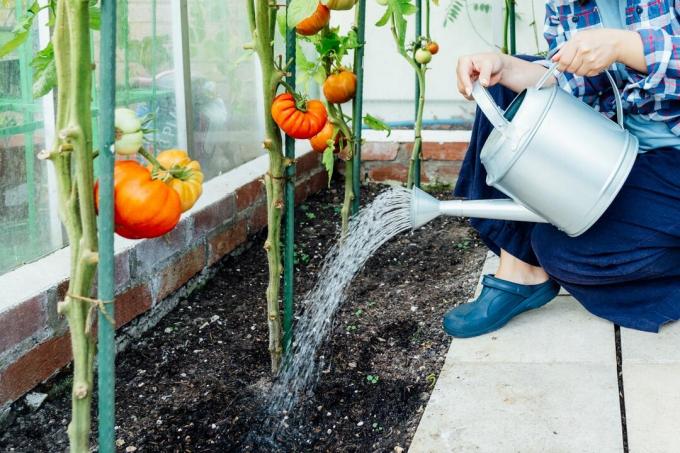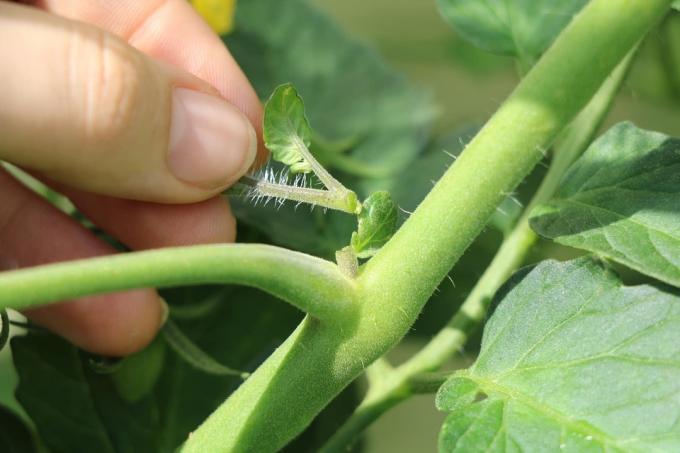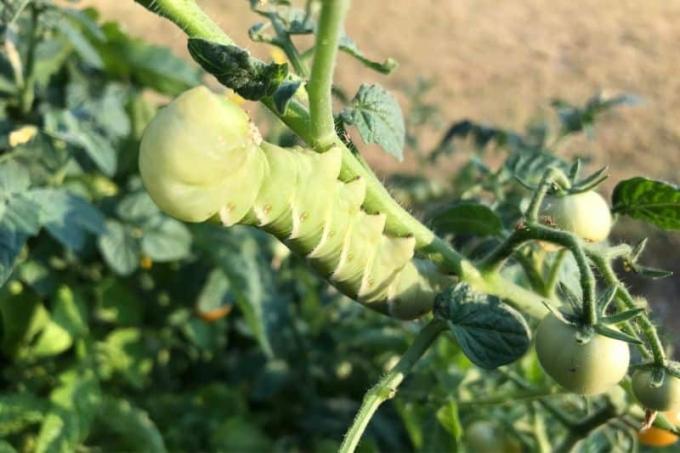
Tomato plants need to flower for fruiting. Flower formation is an indicator of whether the plant is doing well, so here is everything you need to know about tomato flowering.
In a nutshell
- Beginning of flowering from spring
- Flowering dependent on weather and location
- too much nitrogen fertilizer minimizes flowering
- Phosphorus fertilization promotes flowering
- Care measures required to promote flowering
Table of contents
- Tomato flowering time
- promote flowering
- Suitable location
- Care
- Causes of flower drop
- frequently asked Questions
Tomato flowering time
The regular flowering period of tomatoes (Solanum lycopersicum) begins in May. It can change due to the weather, the variety and the respective site conditions as well as other also delay influences. The first tomato blossoms should be visible by mid-June at the latest.
The flowering period ends when the first fruit sets. Under optimal conditions, the flowering period for early varieties can last up to two weeks. With later and slow-growing varieties as well as with tomatoes in suboptimal locations, fruit set formation and thus the end of flowering can take up to four weeks.

September is the latest time by which flowers can be erupted and become have formed fruit buds should. Otherwise there is not enough ripening time for the tomatoes. The flowers that don't have this should be removed quickly so that more energy is available for the development of existing ones.
Notice: Green berries first develop from the small fruit buds, which then develop into tomatoes in the course of the further ripening process.
promote flowering
In order to increase the chances of flowering and, ideally, plentiful flowering, a few measures are recommended.
Suitable location
Strong, healthy growth is required for flowering, for which an optimal location is essential. Tomatoes make the following demands on them, which must be met:
- six to seven hours of sun per day (sunny)
- constantly higher temperatures without much drop (ideally around 20 degrees Celsius)
- airy space to avoid heat build-up
- protected from wind and rain
- evenly moist, well-drained soil
- nutrient-rich soil
- sufficient space from 60 to 80 centimeters per plant

Tip: In addition to tomato plants, for extensive pollination to occur, you should also include other Plant flowering plants in the garden or on the balcony in the immediate vicinity that are pollinated by insects put on. Alternatively, you can also shake the flowers several times to get the pollen on the pistils.
Care
Due to the sometimes rapid growth of tomato plants and the influence of the weather, various care measures are recommended to promote tomato flowering.
- exhausted once a weekto ensure light transmission
- remove dried leaves to avoid unnecessary energy and nutrient consumption
- at the beginning of vegetation apply fertilizer with increased phosphorus and low nitrogen content
- water regularly and prevent dehydration and overwatering
- Check plants at short intervals for pests or diseases and fight them if necessary

Tip: A ready-to-use tomato fertilizer that already has the right composition is best for flowering.
Causes of flower drop
Blossom dropping reduces the crop yield, which is why hobby gardeners strive to prevent or counteract it. To do this, the causes must be identified. This may be due to the already mentioned suboptimal site conditions and adequate care. In addition, there are other possible causes:
- too many flowers; normal are between five and a maximum of 20 flowers per inflorescence
- prolonged temperatures below 18 degrees or above 30 degrees Celsius
- Insufficient/absent fertilization due to humidity below 40 or above 70 percent
- pest infestation

Typical pests that can attack tomato blossoms are spider mites, aphids, the whitefly, as well as caterpillars and tomato leaf miners. They can eat away at the flowers or stick them together, which means that pollination is no longer possible and the flowers often fall off prematurely. To prevent pests and get rid of them without damaging any existing fruit set, you should spray the plants with nettle juice or manure to strengthen them. Once a week is usually sufficient.
frequently asked Questions
The fruits develop from the flower. To do this, the flowers must be pollinated and the pollen transported from the stamens to the pistils. This works via flying insects like bees and the wind blows them up. If there is no pollination due to a lack of flowers, fertilization is not possible and no fruit can form. Consequently, the buds are essential to a crop and determine the size of the crop yield.
The flowers of tomato plants are lemon yellow and consist of five petals. They feel very smooth and supple and are hairless. In the upper area they have a diameter of up to two centimeters. Inside the flower are five tube-like fused stamens, which represent the male sex organ. A dark pistil is located in the center, which is the female sex organ.
This refers to the first flowers of rather slow-growing tomato plants. By cutting off the first flowers, the plant has more energy available, which it can invest in growth. This stimulates shoot growth, which means that more shoots with more inflorescences and consequently more fruit sets can develop. A more extensive harvest is sought through the so-called "pinching". However, this also delays harvest maturity.
That depends on the weather and especially the temperature and the variety. Early tomato varieties require between 45 and 70 days from flowering or pollination. Later tomato varieties are usually only ready for harvest after 90 days.
